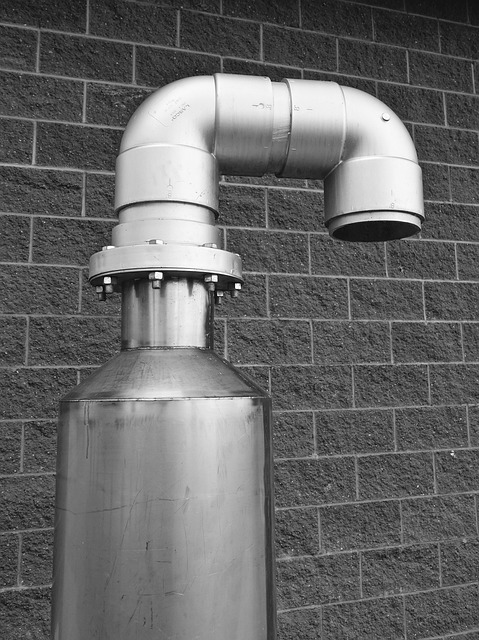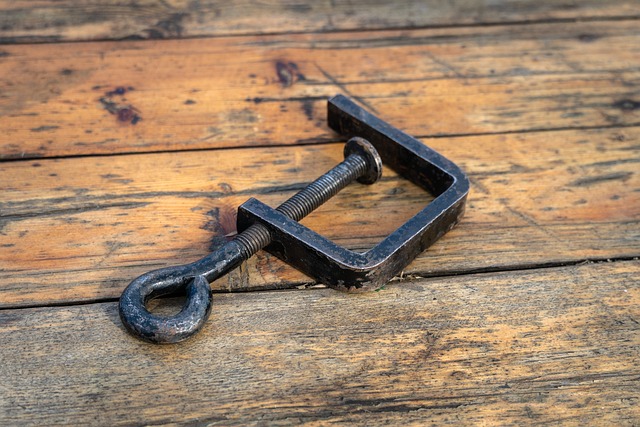The Dome Clamp Training Simulator is a cutting-edge tool transforming emergency responder preparation, offering a safe environment to practice dome clamp skills without risks. Mimicking real equipment with precise controls over flow rates and pressure, these simulators enhance technique, teamwork, and understanding for various industries like petrochemical and pharmaceutical. By providing immersive training with customizable scenarios, they improve safety, efficiency, and response times, reducing incident rates and downtime. Select a simulator with high-fidelity realism, portability, and accessibility features to meet diverse training needs and ensure optimal skill development.
In today’s competitive landscape, efficient and realistic training is paramount. The Lid Tight Dome Valve Simulator emerges as a game-changer for industrial drills, offering an immersive and controlled environment. This article explores the dome clamp training simulator—a versatile tool enhancing safety and proficiency. We’ll delve into its key features, integration strategies, real-world applications, and selection criteria. Discover how this innovative solution is transforming training routines across various industries.
- Understanding Dome Clamp Training Simulator: A Essential Tool for Drills
- Key Features and Benefits of a Lid Tight Dome Valve Simulator
- How to Effectively Integrate the Simulator into Your Training Routine
- Real-World Applications: Enhancing Safety and Efficiency
- Choosing the Right Simulator: Factors to Consider
- Case Studies: Success Stories from Industries Using Dome Clamp Training Simulators
Understanding Dome Clamp Training Simulator: A Essential Tool for Drills

The Dome Clamp Training Simulator is an innovative tool designed to revolutionize the way firefighters and emergency responders prepare for critical situations. This device offers a realistic simulation of a dome clamp, an essential piece of equipment used in various rescue operations. By replicating the physical and sensory aspects of working with a dome clamp, it provides trainees with a safe and controlled environment to practice their skills.
This simulator is particularly valuable for drills as it allows participants to experience the tension and challenges of securing a structure without the risks associated with live training. It enables firefighters to enhance their techniques, improve teamwork, and develop a better understanding of dome clamp applications. With its ability to offer consistent and repeatable scenarios, this tool ensures every trainee receives comprehensive preparation for real-world emergency responses involving confined spaces and structural integrity.
Key Features and Benefits of a Lid Tight Dome Valve Simulator

A Lid Tight Dome Valve Simulator is a cutting-edge tool designed for specialized training drills, offering numerous advantages for professionals in various industries. This innovative device mimics the precise movements and functions of real dome valves, allowing trainees to gain hands-on experience in a controlled environment. One of its key features is the advanced clamping mechanism that ensures a tight seal, replicating the crucial aspect of valve operation—a vital skill for maintaining system integrity.
By utilizing this simulator, trainers can create realistic scenarios, enhancing the overall training process. It provides an efficient way to teach and refine dome clamp techniques, ensuring operators are well-prepared for real-world challenges. The simulator’s versatility enables customizable settings, accommodating different training levels and objectives, making it a valuable asset for any organization focused on excellence in valve control and maintenance.
How to Effectively Integrate the Simulator into Your Training Routine

When integrating a lid tight dome valve simulator into your training drills, start by understanding its unique benefits. This tool offers an immersive and realistic experience, allowing trainees to practice opening and closing valves in a controlled environment. It’s particularly useful for emergency response teams who need to simulate high-pressure scenarios without risking actual equipment or personnel.
To make the most of the simulator, incorporate it into your routine as a progressive challenge. Begin with basic operations like valve closure under normal conditions, then gradually increase complexity by introducing time limits, simulated failures, and varying pressure levels. Regularly rotating tasks ensures diverse training and prepares trainees for unexpected situations. Remember to provide clear instructions and debriefing after each session to reinforce learning and identify areas for improvement.
Real-World Applications: Enhancing Safety and Efficiency

In various industries, from petrochemical to pharmaceutical, the safe and efficient handling of pressurized containers is paramount. A dome clamp training simulator plays a crucial role in preparing workers for real-world scenarios involving tight dome valves. By replicating the physical dynamics and ergonomic challenges of operating these valves, simulators allow trainees to gain practical experience without the risks associated with live demonstrations.
This immersive training environment isn’t just about safety; it also boosts efficiency. Trainees learn proper tightening techniques, identify potential issues like leaks or misalignments, and develop muscle memory for critical procedures. This translates into faster, more reliable operations when facing actual emergency situations, ultimately enhancing overall plant safety and productivity.
Choosing the Right Simulator: Factors to Consider

When selecting a dome clamp training simulator, several key factors come into play to ensure effective and safe practice for emergency response teams. Firstly, consider the realism of the simulation; a high-fidelity dome valve simulator that replicates the intricate details and functionalities of real-world equipment will provide more valuable training. Look for features like precise control over flow rates, pressure settings, and valve positions to enable a wide range of scenarios.
Secondly, think about portability and ease of setup. For efficient training sessions in various locations, opt for a simulator that is lightweight, compact, and easy to assemble. This allows teams to quickly set up realistic drill environments without extensive preparation, enhancing the overall effectiveness of dome clamp training. Additionally, consider the inclusion of accessories like mannequins or sensor feedback systems to create more dynamic and immersive training scenarios.
Case Studies: Success Stories from Industries Using Dome Clamp Training Simulators

In various industries, the adoption of dome clamp training simulators has led to significant improvements in safety and efficiency. These simulations provide a controlled environment where workers can practice opening and closing tight dome valves, enhancing their skills and confidence before engaging with real equipment. For instance, in the oil and gas sector, companies have reported reduced incident rates and faster response times following simulator-based training. The ability to repeat and refine techniques without risk of injury or environmental harm has proven invaluable.
The manufacturing industry has also benefited from dome clamp training simulators, particularly in sectors producing high-pressure components. By simulating diverse scenarios, workers gain a deeper understanding of valve behavior under various conditions. This preparation translates into smoother operations and fewer downtime incidents when dealing with actual machinery. Such success stories highlight the effectiveness of these simulators as powerful tools for skill development and safety protocol adherence across different industries.






